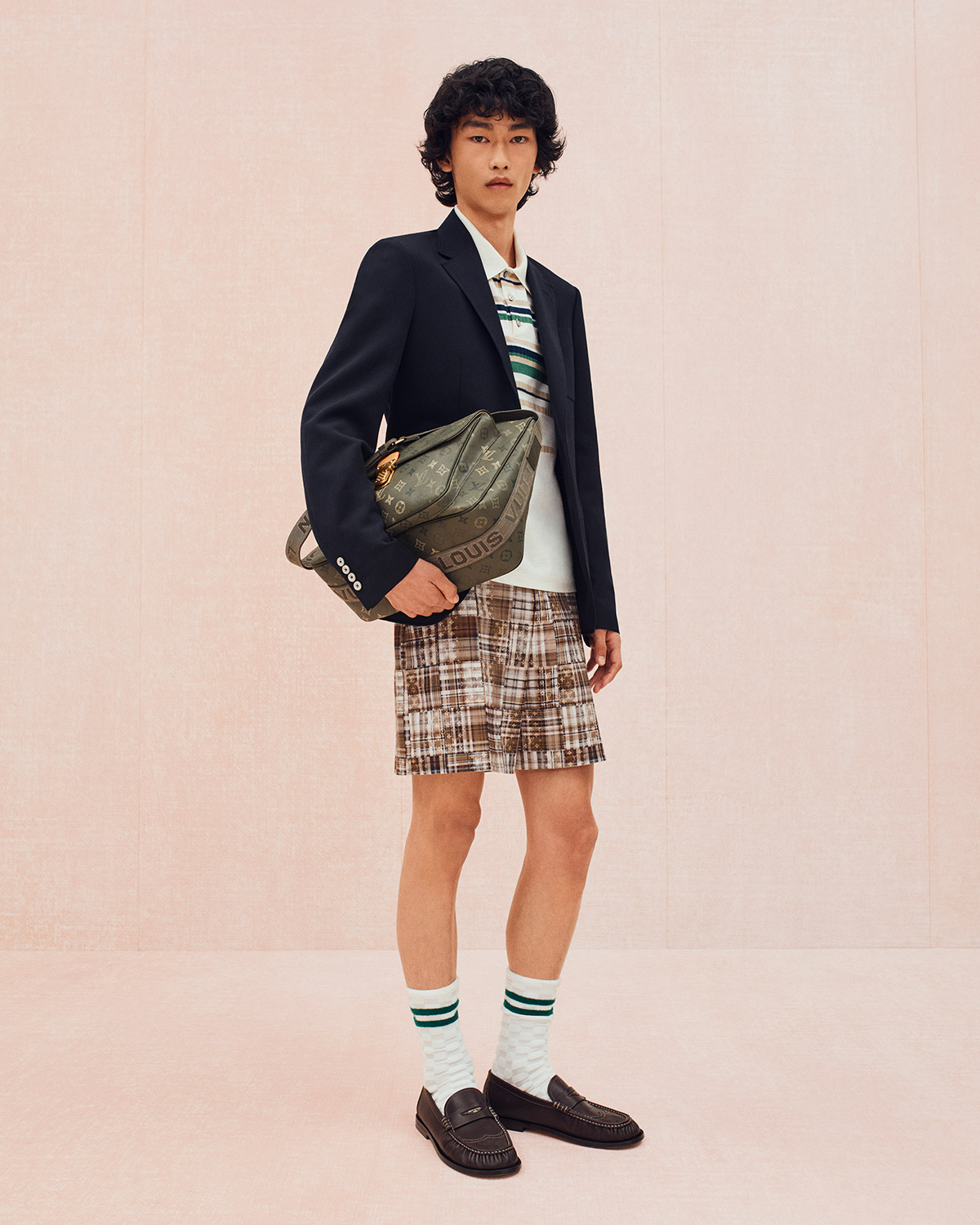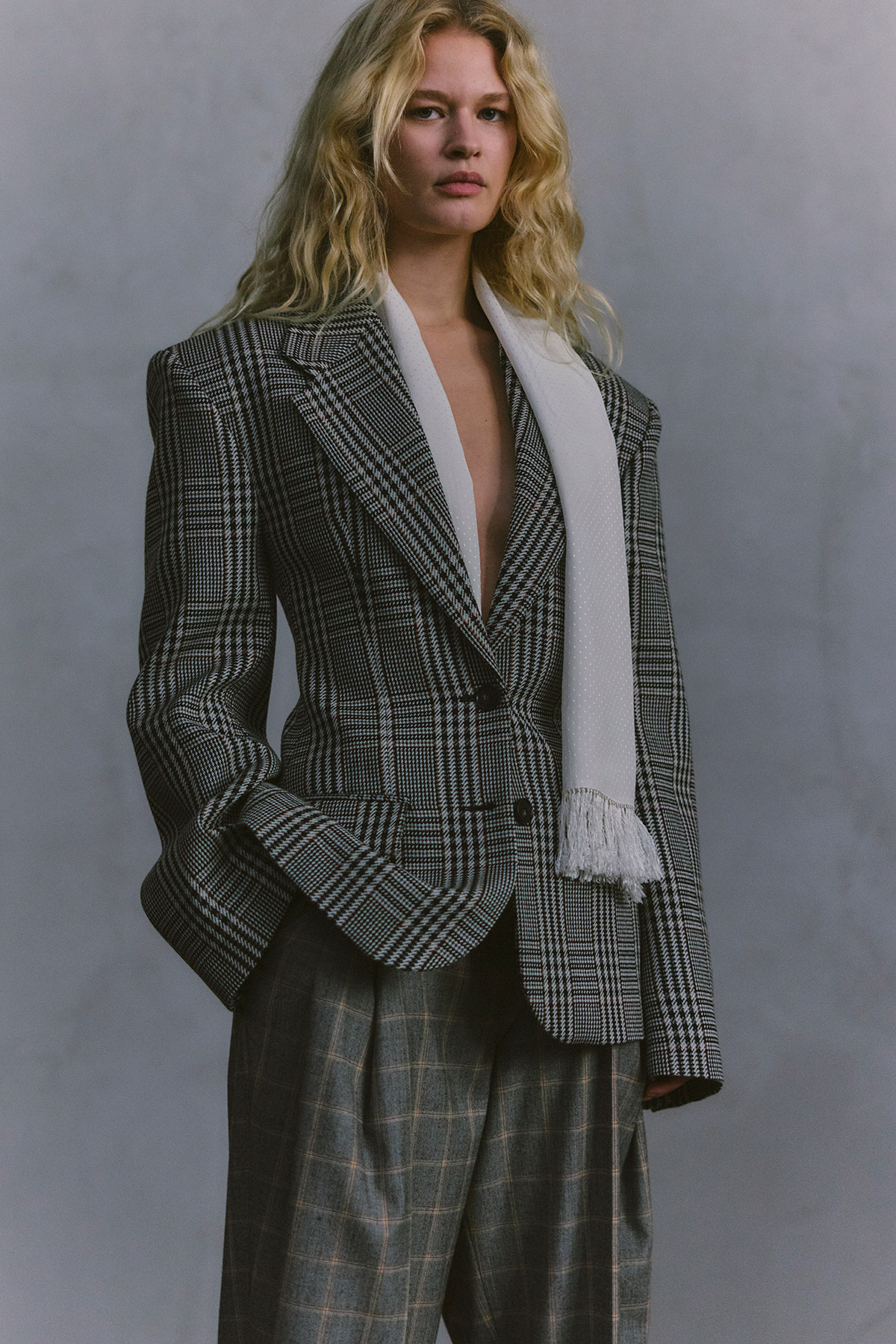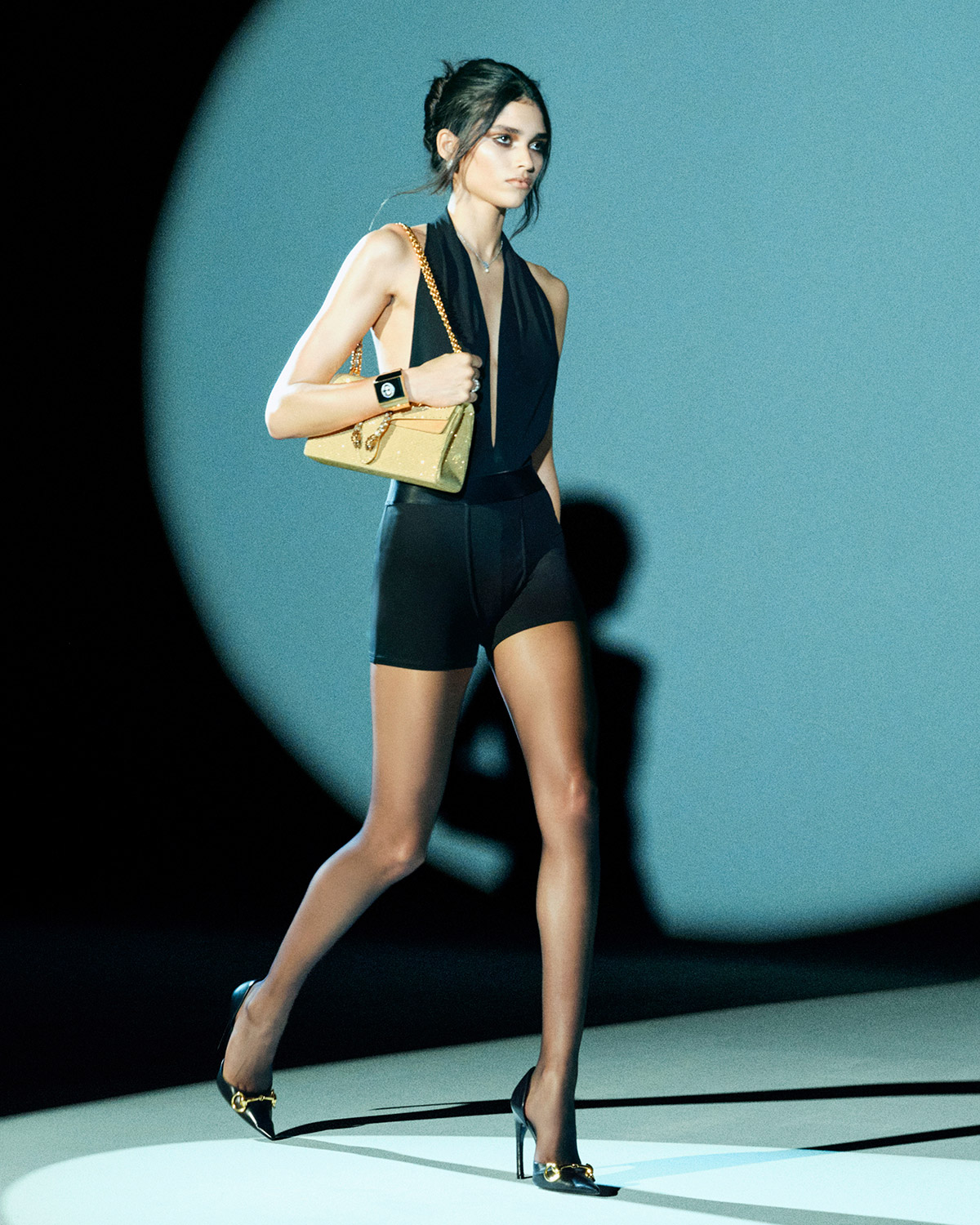The Spring 2026 collection saw Burton move away from structured rigidity, peeling back layers to reveal skin, sensuality, and a new definition of strength.
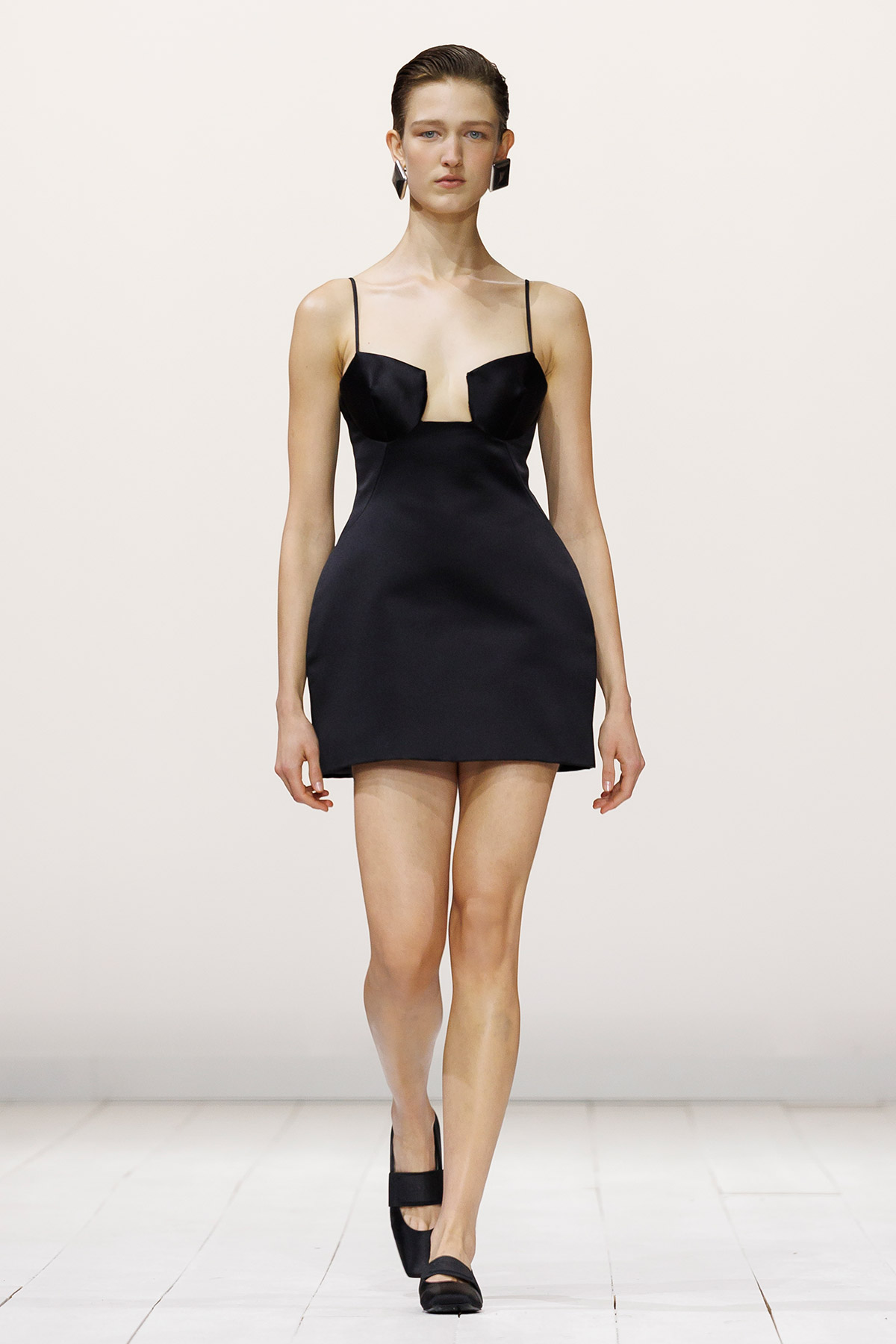
Summary
- Sarah Burton’s sophomore collection for Givenchy is redefining power dressing by exploring inherently feminine archetypes.
- The collection marks a significant evolution in Burton’s approach, shifting from historical drama and ornate protection to a focus on the body, sensation, and the chic audacity of intimate exposure.
- Structures are softened and deconstructed, utilizing the friction between hard leather and ultra-sheer materials to emphasize skin, lightness, and a self-possessed sensuality.
The old rules of power dressing are exhausted. For decades, the memo stated that asserting authority meant adopting the suit, the shoulder pad, and the rigid structure. Sarah Burton shredded that memo in her Spring 2026 collection for Givenchy. Her second collection for the house explores the power inherent in deliberate exposure.
This marks a significant change in Burton’s own design vocabulary. While her past work often involved high drama and mythological narratives, this new chapter focuses intensely on the present body. It is a calculated pivot from mythology to materiality, from defense to intimacy. Burton is playing a sophisticated game with the observer’s desire, creating a heat.
As Burton explained: “I wanted to explore the strengths of women through feminine archetypes. It started with peeling back the structure of tailoring to reveal skin and a sense of lightness and ease—and then exploring the female vocabulary of dress and undress.”
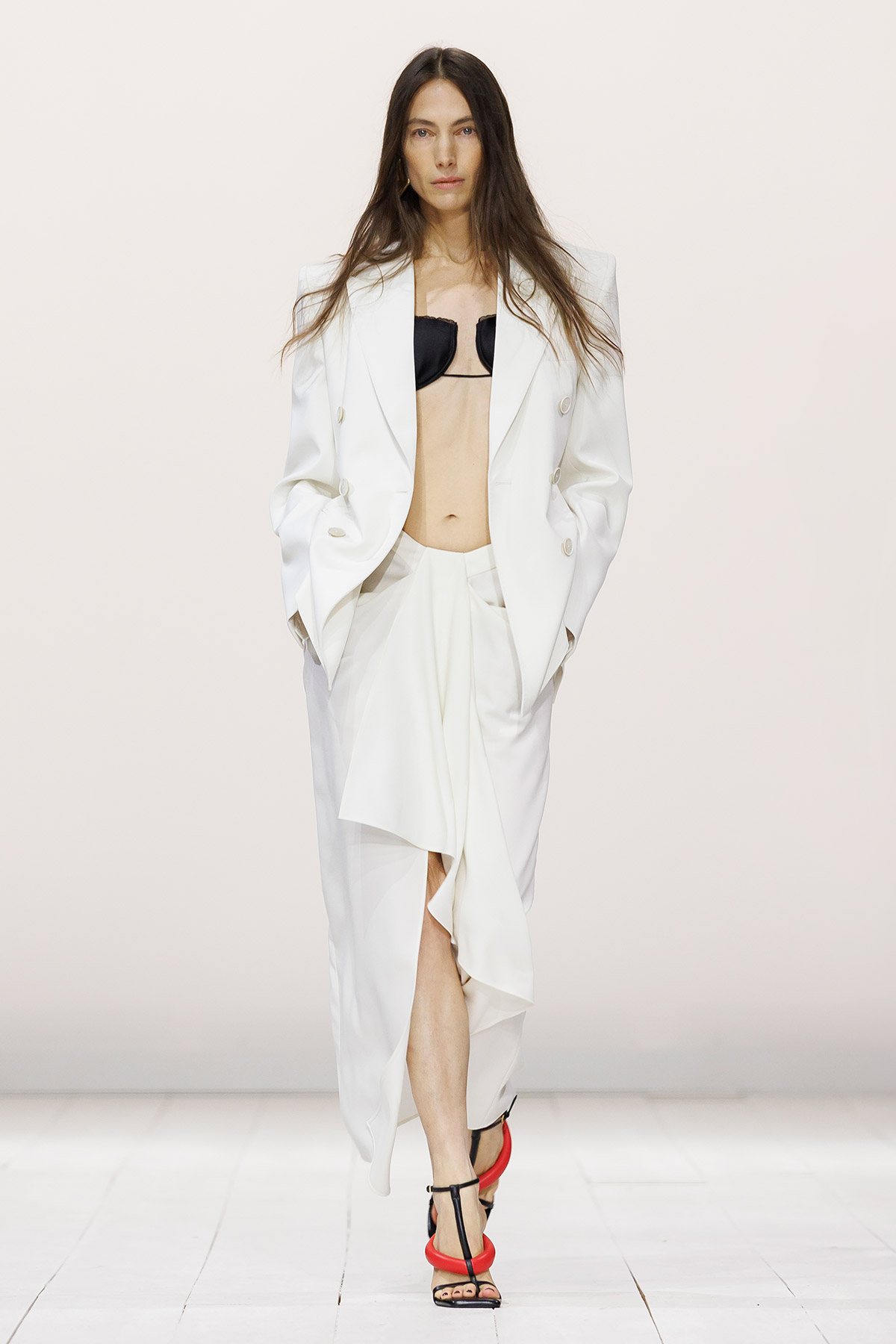
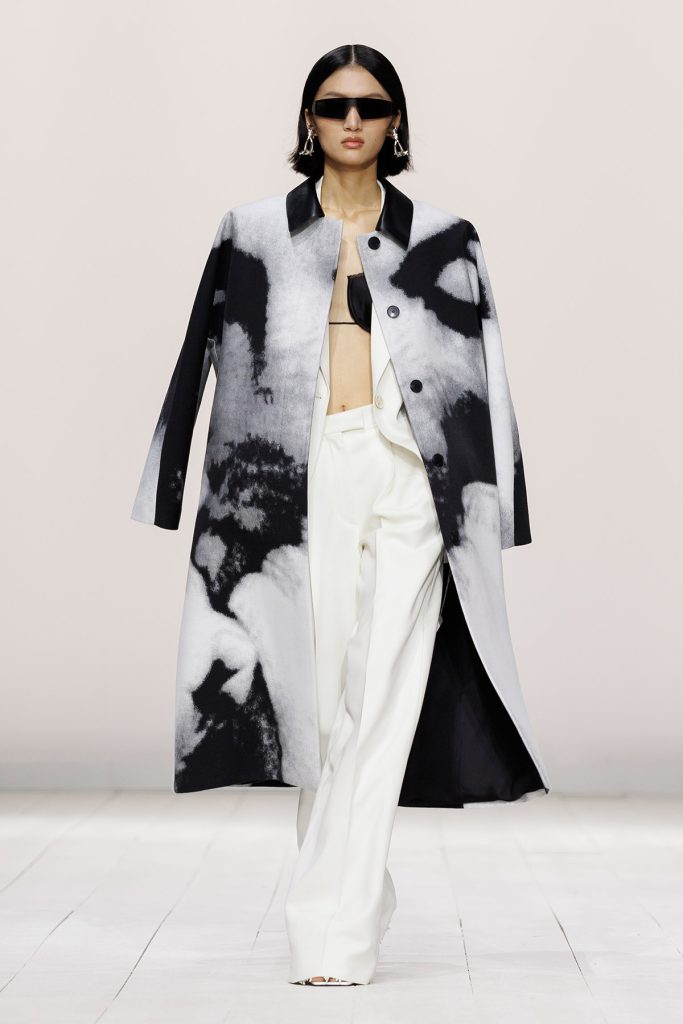
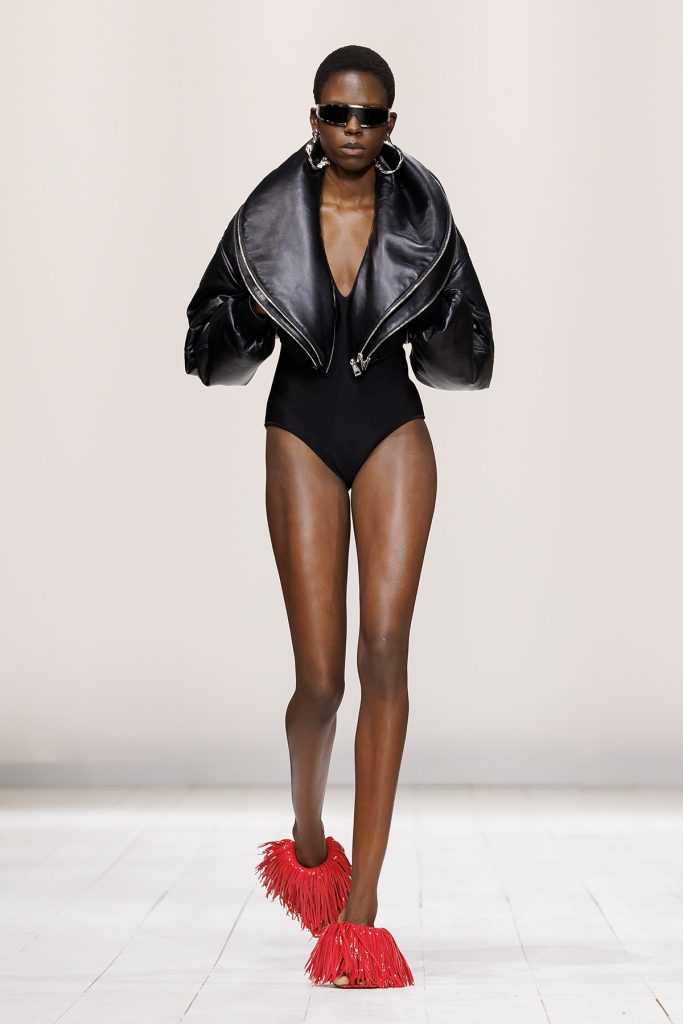
This philosophy of “peeling back” was the collection’s technical magic trick. Necklines stood away from the clavicle, creating a dynamic in pieces that seemed to unwrap from the body, like a modernist façade giving way to a hidden garden. A slouched double-breasted jacket and draped skirt prioritized fluidity over rigidity. Even outerwear, such as a sharp car coat in photographic wool jacquard or a cropped leather bomber, looked designed to be shed as readily as they were worn.
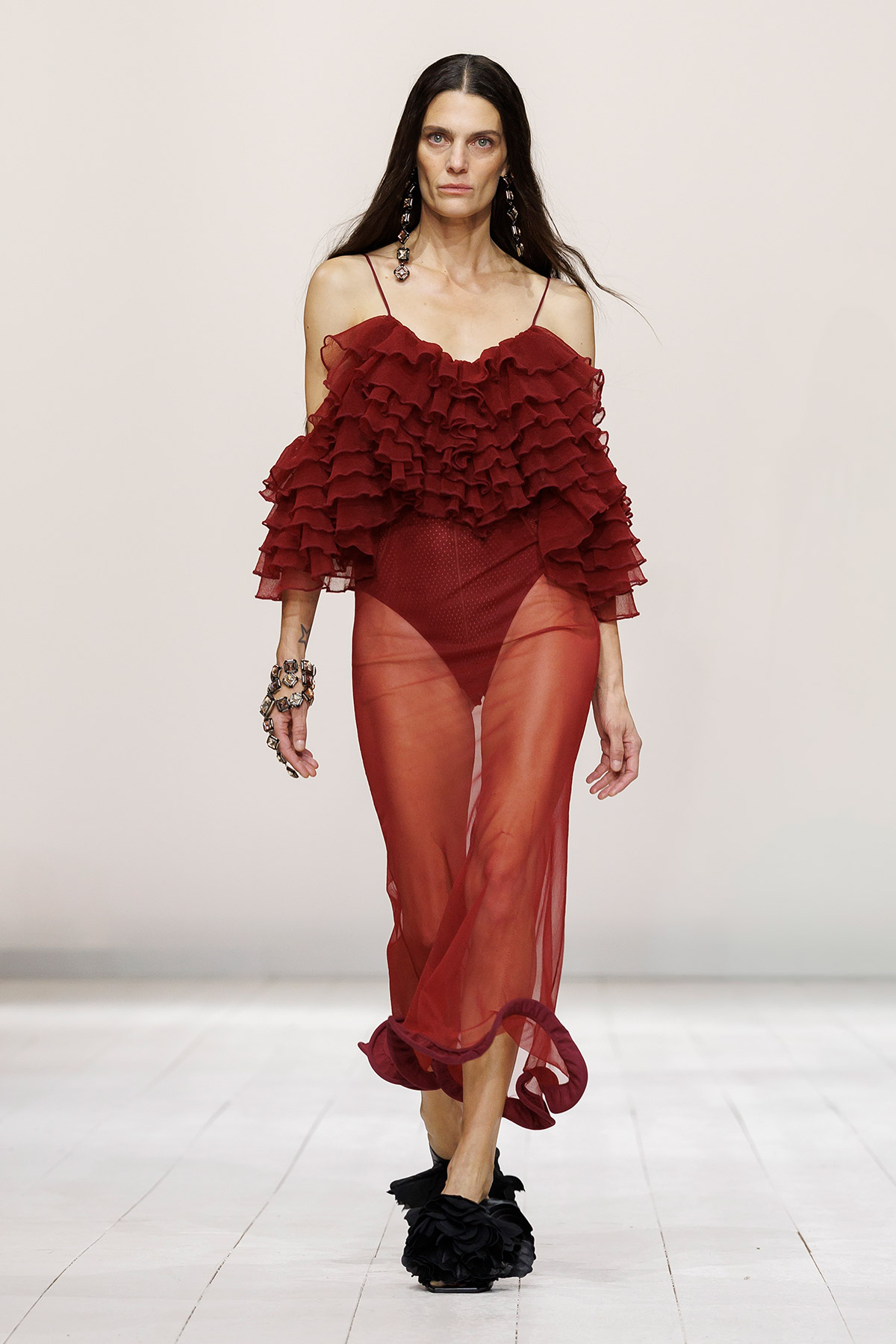
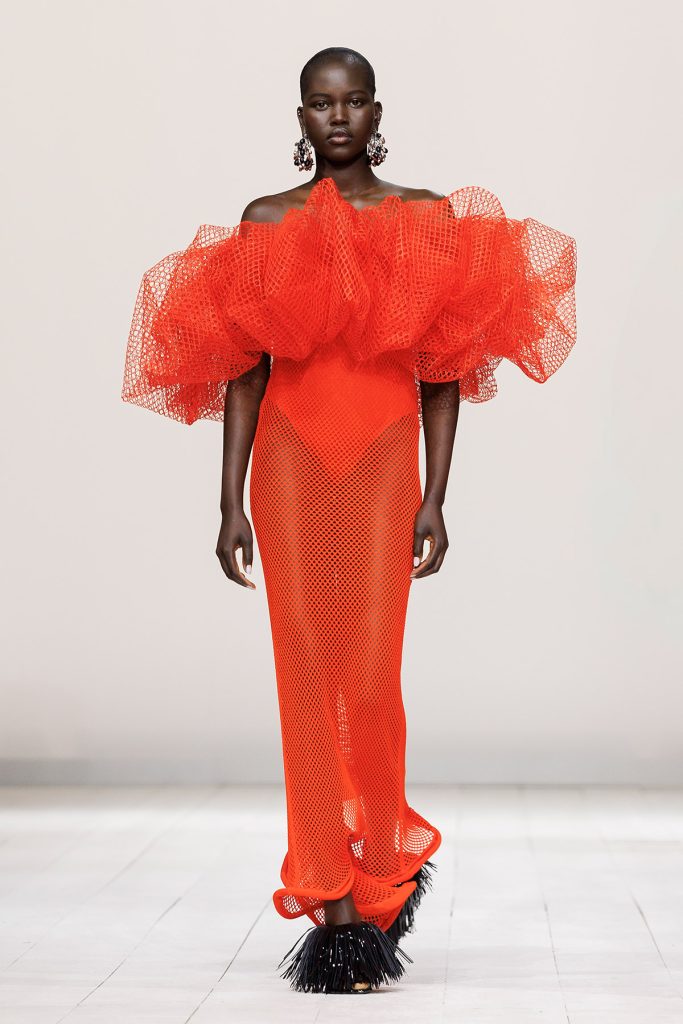
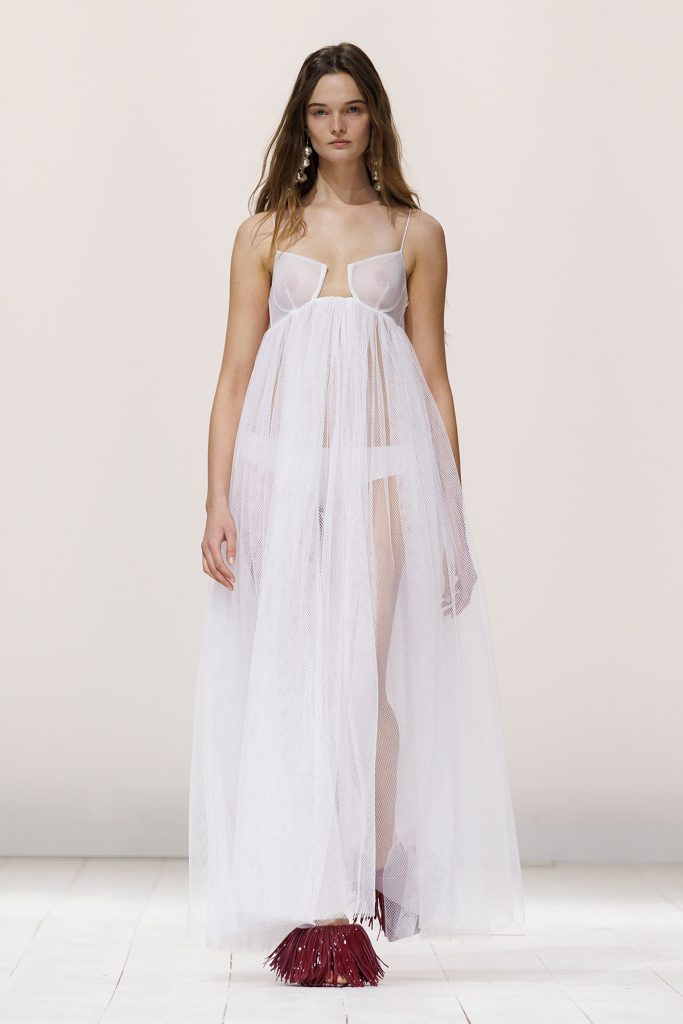
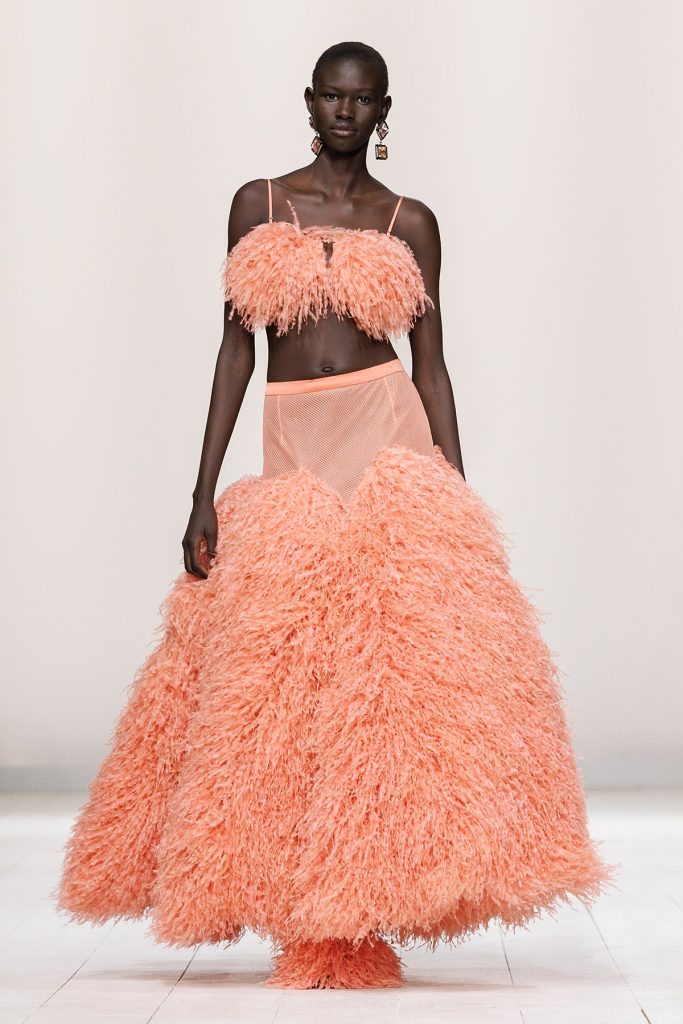
The exploration of “dress and undress” led to a fascinating study in “barely there” materiality. The “stocking dresses,” executed in ultra-fine cherry red and calico knits, clung with a second-skin precision. Similarly, stocking fishnet variations in stark black and vibrant orange offered sheerness. A cutaway empire dress in white Paris net felt almost spectral, blurring the boundaries between a private morning and a public appearance.
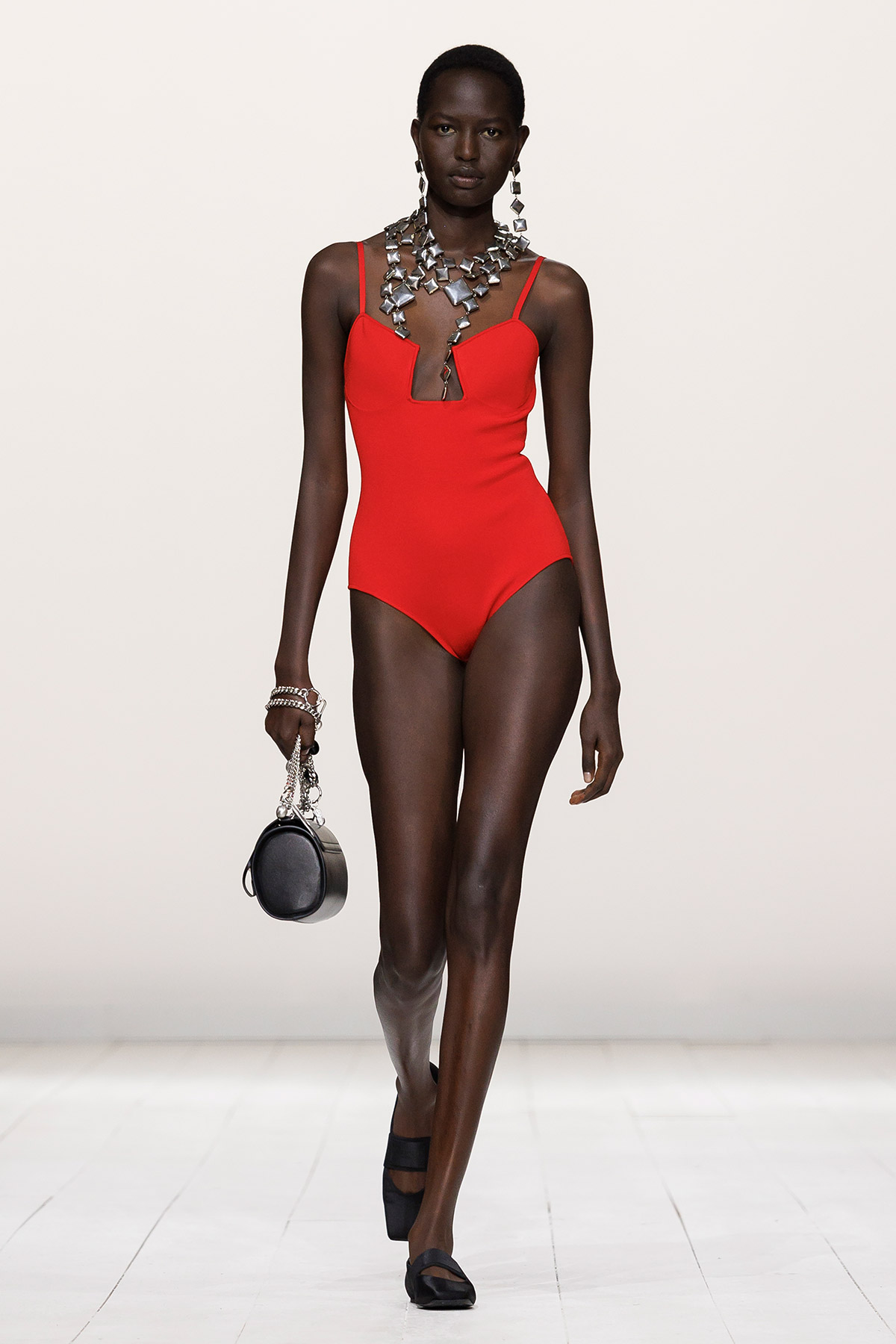
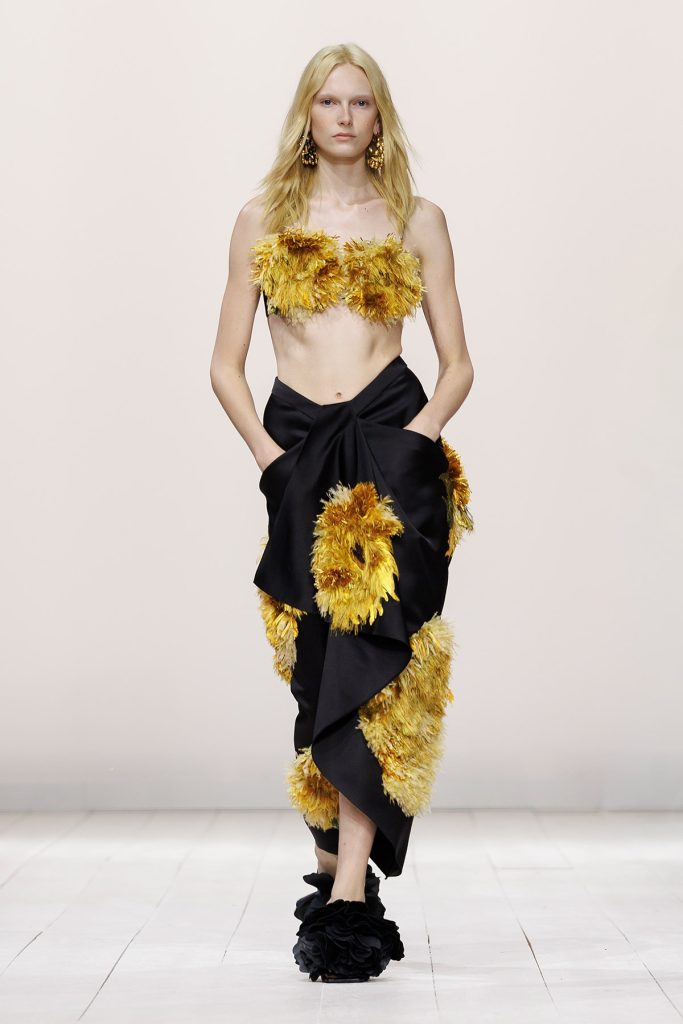
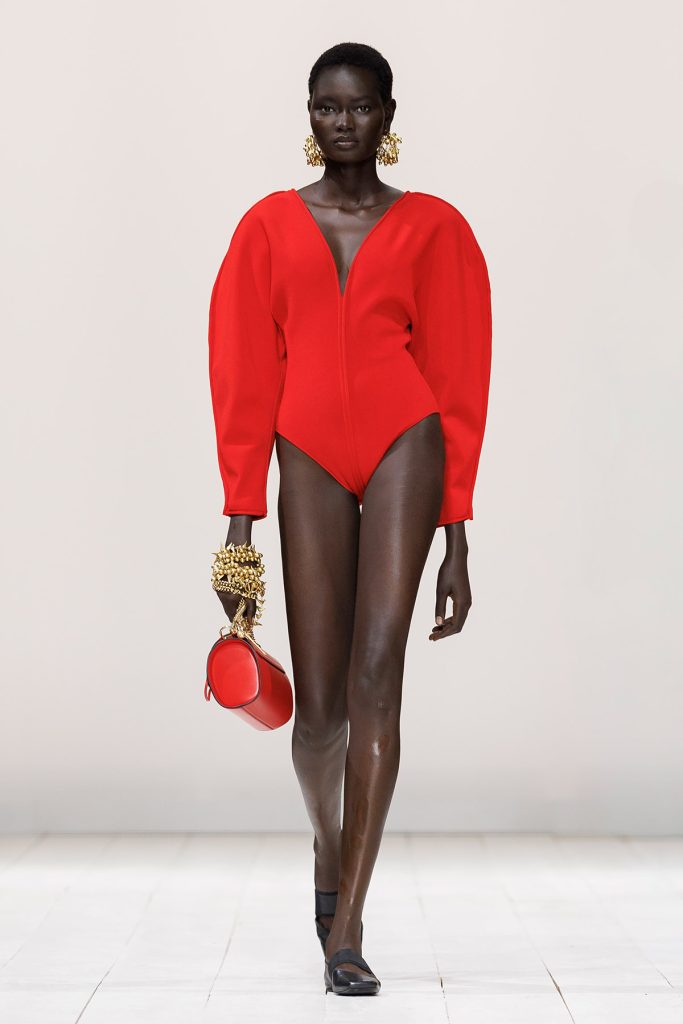
The sensuality was bold. Lingerie elements were the main event. Rendered in severe black leather [Look 18] or in crushed duchesse satin adorned with delicate sunflower embroidery, these pieces demanded attention. This focus on the architecture of the form continued with a striking lipstick red cutaway body and a sculptural cocoon silhouette in the same intense shade.
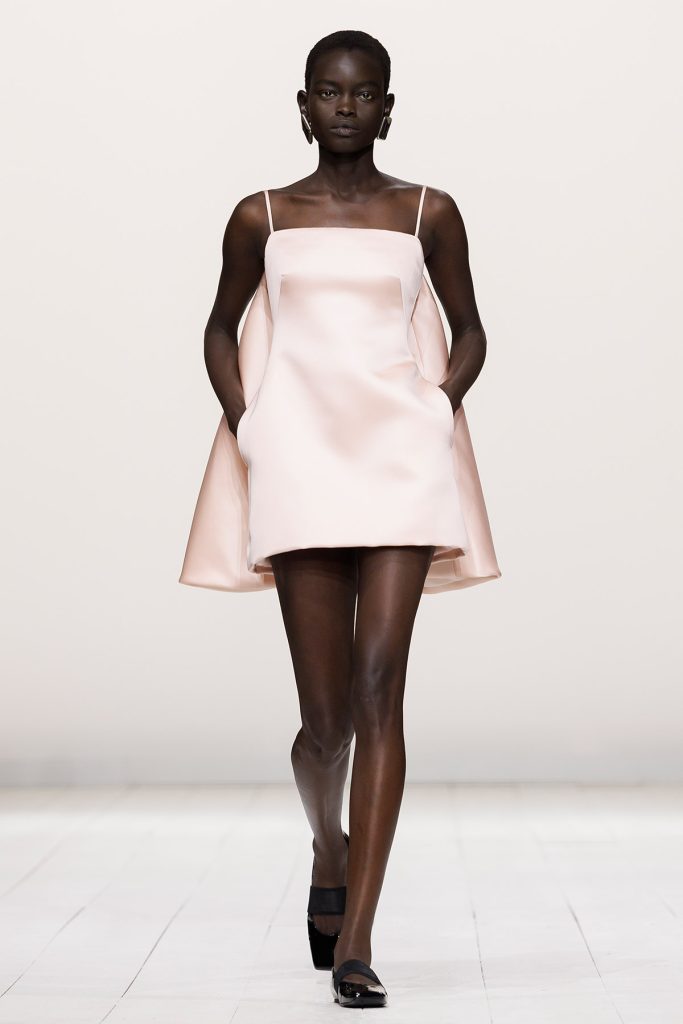
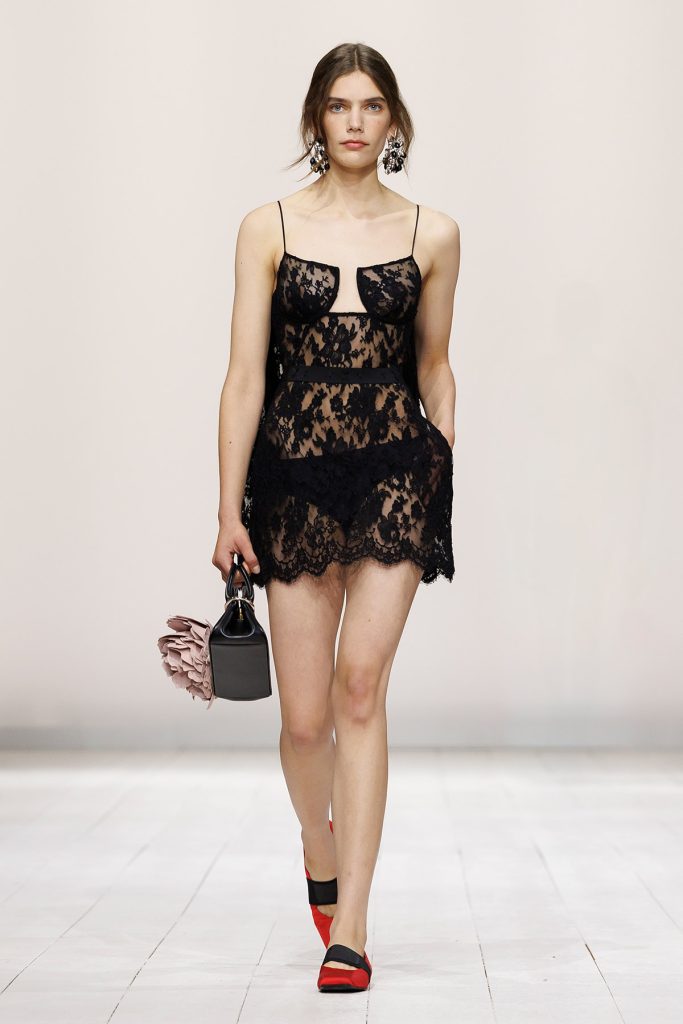
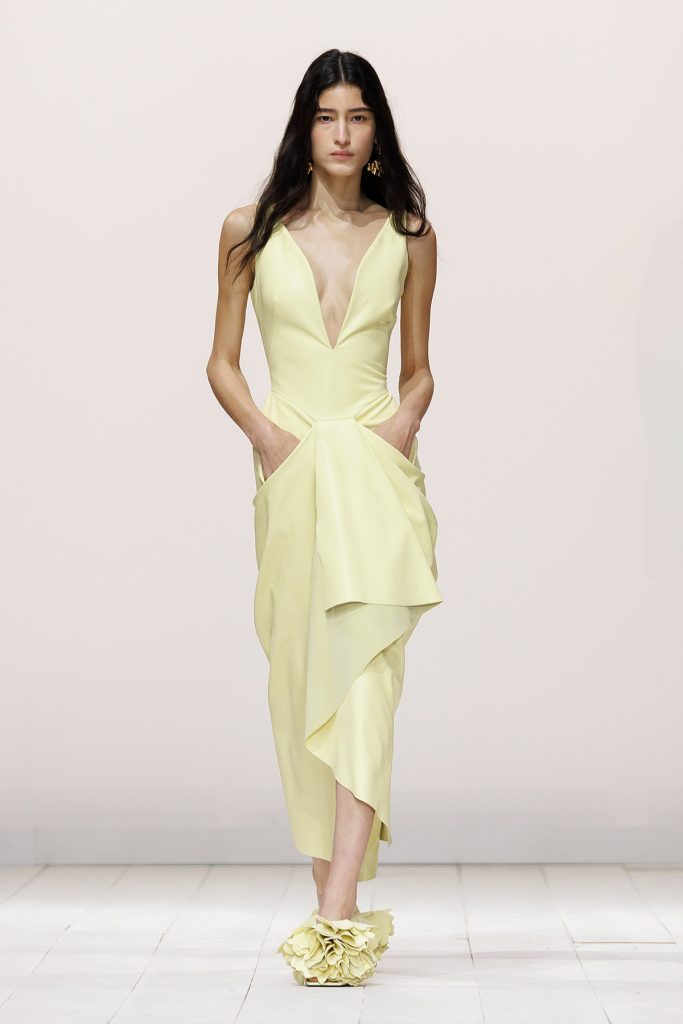
Sliced cape-back dresses, realized in fluid pink silk [Look 4] and sharp black [Look 35], offered a demure entrance only to deliver a dramatic exit that exposed the spine, recalling the high-stakes glamour of classic film noir. A wrapped dress in butter yellow leather [Look 14] molded to the form, its luxury evident in its supple drape.
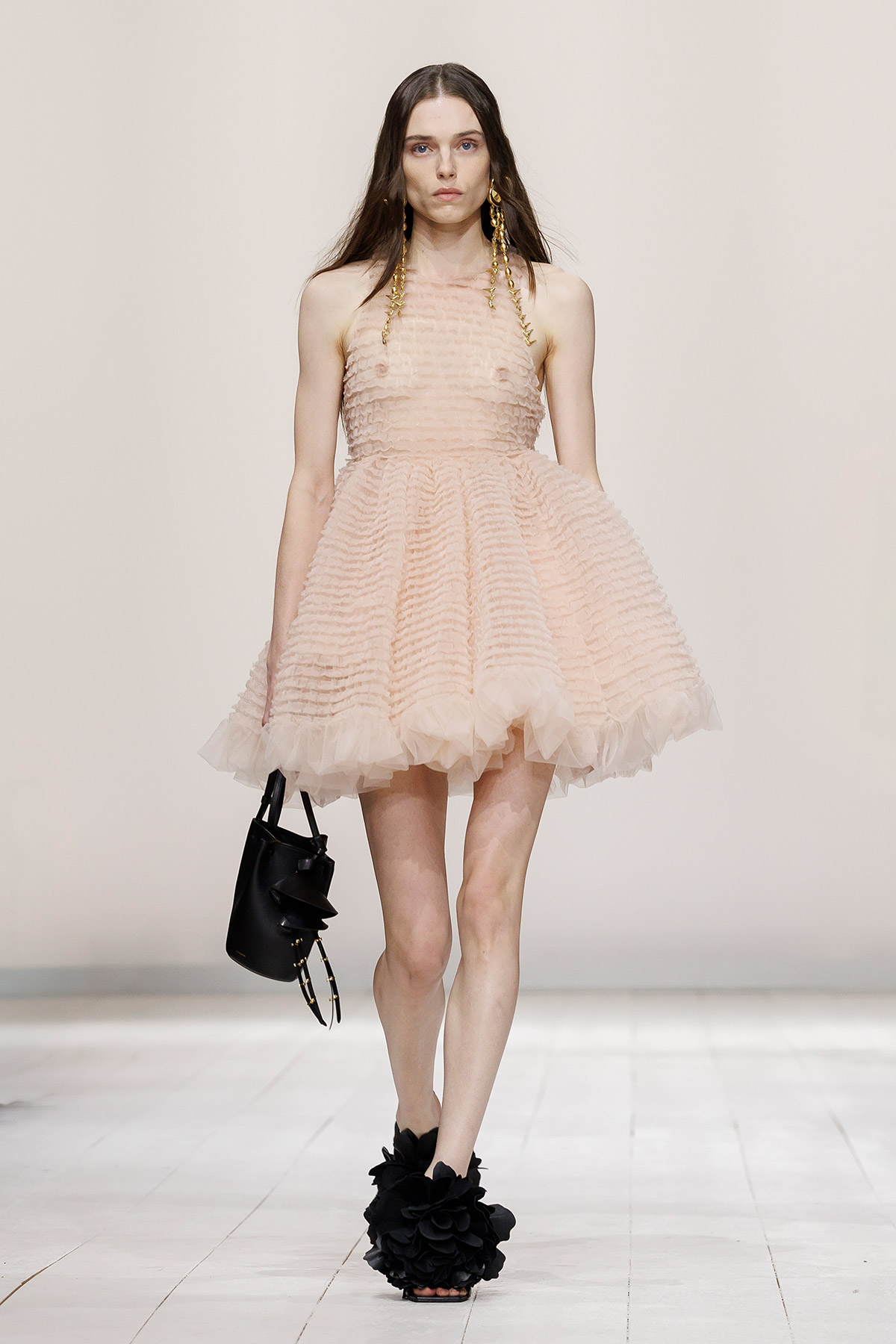
The color palette enhanced this interplay of strength and softness. Bold, uncompromising shades, colors reminiscent of a high-gloss manicure, like the lipstick red used for a leather mini bow bustier dress, contrasted with subversive sweetness. A babydoll dress executed in lipgloss pink knitted frills offered a texture that possessed a compelling tactile quality.
The success of this collection lies in its mastery of exquisite friction—between hard and soft, dress and undress, the observer and the observed. Burton has crafted a vocabulary of desire that is complex and entirely self-possessed.

